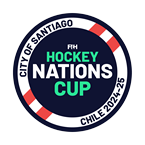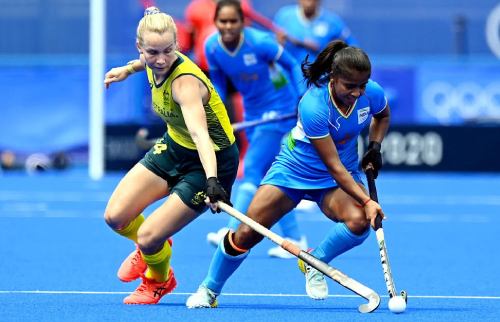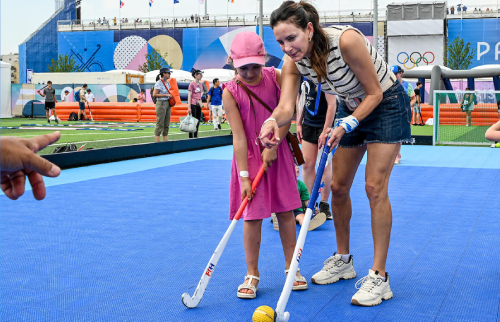
She is a double Olympic gold medallist and the highest scoring female athlete in Olympic hockey history. She is also the all-time top scorer for the Netherlands, a world and European champion and a two-time winner of the FIH Player of the Year Award.
In Part 1 of a special two-part interview, Maartje Paumen – who stepped away from international hockey following a silver medal at the Rio 2016 Olympic Games – tells us what she has been up since retiring, reflects at her sensational career and provides insight on the relentless dedication required to become one of the best drag-flickers to have ever played the game.
Hi Maartje, thanks for talking to us! It been a few years since you retired from playing international hockey – are you missing it, and what have you been doing since?
Maartje Paumen: “Yes, sometimes I miss it, but most of the time I’m happy that I retired. What I’m doing now is being the assistant coach of the ladies team at Tilburg, so I’m still doing a lot with hockey. I also have my own school for teaching kids how to drag-flick, which is really nice to do. So, most of the days in the week I am still on the field and teaching what I have learned over all the years. Next to that, I started a company together with my girlfriend (Savannah Hamming), giving personal training and teaching people how to deal with healthy food. It is a really nice combination, making people aware of what good food does to your body.
“It’s called ‘Fit Happy Healthy’, and we combine good healthy food with personal training. We make people aware of what good food is doing for your body, not only physically but also the mental part of it. When you are physically fit it will help you, especially during this time with covid, we have a lot of people who we can help at this moment. We are really happy that we started.”
Going back to your playing days, you had an incredible career both at international and club level, winning every major title in the sport, some many times over! Olympic gold medals, World Cups, European Championships as well as ton of national and European titles with Den Bosch. Is it hard to choose highlights from all of those achievements?
Maartje Paumen: “Yes, it is, because we had a lot of highlights during all the years. When I think about highlights, I think about London 2012, which was the second time we won the gold medal at the Olympics [after Beijing 2008]. It was really special to me because it was not our best tournament, but we were there as a team and that was really nice. If you win a gold medal at the Olympics, that is really great, but if you want to be successful over a lot of years then the second time you win the medal, it is maybe more special than the first time. I cannot choose between the two, but if I had to choose, I’d go for London 2012. There was also the World Cup in The Hague in 2014, of course. Playing a World Cup in your own country in a really big stadium, where every game we played saw the stadium full of orange people, it was great to play there. And of course, when you win the gold medal at the World Cup in your own country, I really cannot forget that from my highlights. That was a really nice one! As a third highlight, I’m going for all the successes with the club for which I played 13 years, Den Bosch. We won a lot of titles. As I mentioned before, winning once is great but if you can do it over so many years, it is really special for me. Club hockey was really important for me and my development over the years. I think Den Bosch made me who I am as a person, so that is also a highlight. I played 13 years for the club, and 11 times we won the Dutch championship, and 11 times the European Cup with the club.”
As well as being a world class defender and midfielder, you are regarded as one of the finest drag-flickers in the history of the sport. It is a skill that can take years to perfect. Can you give people an idea about the level of dedication and hard work required to master such a difficult skill?
Maartje Paumen: “It took a lot of commitment, of course. I started training when I was 13 or 14 years old and started training together with my drag-flick coach Toon Siepman when I was 18 years old, when I started playing for Den Bosch. I trained with him every week next to my normal training with the club and the national team, I was going with him to the field every week and only doing drag-flicking. I was also going to the gym one or two times extra in a week. I did that from 18 or 19 years old until the day that I stopped playing for Den Bosch and the national team.”
“Now I teach young kids how to drag-flick through my own school, together with the coach of Den Bosch. I do the part only on drag-flicking, and kids between 12 and 16 years old can train with me. I tell them all the stories about how many hours you have to train, that they don’t have to think that after ten sessions they have a really great drag-flick.”
Yes, there are a lot of hours in it, and I think that if you want to be successful in what you are doing, you have to train and repeat it again, and again, and again. But for me, when I was doing it myself, I always had a mind that I wanted to have the best drag-flick in the world, so for me it was not hard to go to the field and train on my drag-flick. I really loved to do it, but it took a lot of hours.”
It must be nice to pass on that knowledge to the next generation. Do you get a lot of satisfaction from that?
Maartje Paumen: “Yes, especially when you see them growing, and that their flick is getting better. I really love it.”
Part two of the interview with Maartje will be available on FIH channels later this week.























